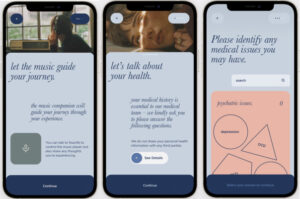The constant evolution of retail — all to satisfy the customer and keep them engaged — has made the industry extremely interesting to watch. The retail industry is redefining its business model and operations by leveraging advanced technologies like augmented reality (AR), artificial intelligence (AI), machine learning (ML), and analytics. These technological capabilities are greatly facilitating today’s customer journey, moving beyond customer satisfaction.
IKEA’s IKEA Place app — which allows users to see the brand’s products in a superimposed graphics environment — is a perfect example of how savvy retailers are integrating AR-enabled applications into their businesses.
According to a report by Markets and Markets, AR in the retail market is expected to grow at a CAGR of 47.1 percent during 2017-2023, from $411.3 million to $7,951.2 million.
Changing business models and improving operational formats
With the growing popularity of the do-it-yourself (DIY) movement and technological disruption, market fragmentation in the retail space continues to grow.
While the new-age digital retailers are bringing major changes in the retail sector, traditional retailers are taking initiatives to bridge this widening gap by adopting appropriate digital approaches.
Some of the advanced formats are subscription, flash-sale, and on-demand delivery. As technology continues to influence customer buying behaviour, retailers will need to redefine their business approaches by adopting digitally-driven omnichannel approaches.
Here’s how technology is disrupting the retail industry:
Augmented personalised shopping experience
With the help of cutting-edge AR technologies, the retail industry is continuously striving to improve customer experience through personalisation, aiming at prospective buyers to increase sales.
Augmented shopping enables shoppers to engage with products and brands through features, including try on, try out, or personalise the product virtually. These experiences help brands deliver more intuitive and detailed product information than standard web experiences.
Virtual try-on or try before buy
Virtual try-on began as a marketing approach by premium brands across cosmetics range and fashion, where they integrated mirror and colour try-on features into their apps. The idea became popular as consumers love how they can try different makeup and accessories, match them with their skin tonality and dresses without visiting a store.
Further, brands are using an all-in-one capture system to give realistic and interactive 3D and AR experiences to customers and enable VTO with the help of any smartphone, laptop, or camera. It feels as real as being there.
For example, Nike’s AR app — Nike Fit — allows customers to get recommendations for best-choice shoes, according to the feet measurement. This app considers many factors — personal preferences, shoe materials, foot shape, the lacing or stitching pattern — and tells users the exact shoe size in Nike.
Going forward, consumers would explore new ways in which technology can help them simplify their lives by sparing them time. In this case, advanced technologies like AR and VR will play a significant role.
For instance, AR systems can help customers watch a virtual catalogue, select products for virtual try-on, and superimpose the product on the customer’s body.
In-store navigation
AR helps retailers to redefine the way their customers navigate within a store. An AR-driven app shows the shoppers where the desired object is located in addition to suggesting an optimised shopping route. Additionally, the gamification elements in these apps not only lead customers to the desired product but also discounts, gifts or other surprises.
Another great benefit of AR in retail is product information. The potential buyer points their phone’s camera at a product to see detailed information about the item. The information can significantly affect the customer’s decision-making process.
Some apps also compare similar products based on selected criteria, thus making it easier to reach a decision. For example, Crocs’ AR app — Crocs LiteRide AR — provides shoppers with detailed information about products.
Summing up
By integrating immersive technologies like AR into existing ecommerce stores, brands are making shopping experiences more friendly, intuitive, and satisfying. These technologies are changing the way businesses function, and revolutionising the retail industry by completely transforming the current shopping experience, helping brands remain competitive while replacing the pain points with informative and engaging experiences.
(Disclaimer: The views and opinions expressed in this article are those of the author and do not necessarily reflect the views of YS.)










